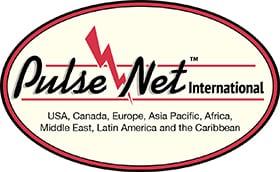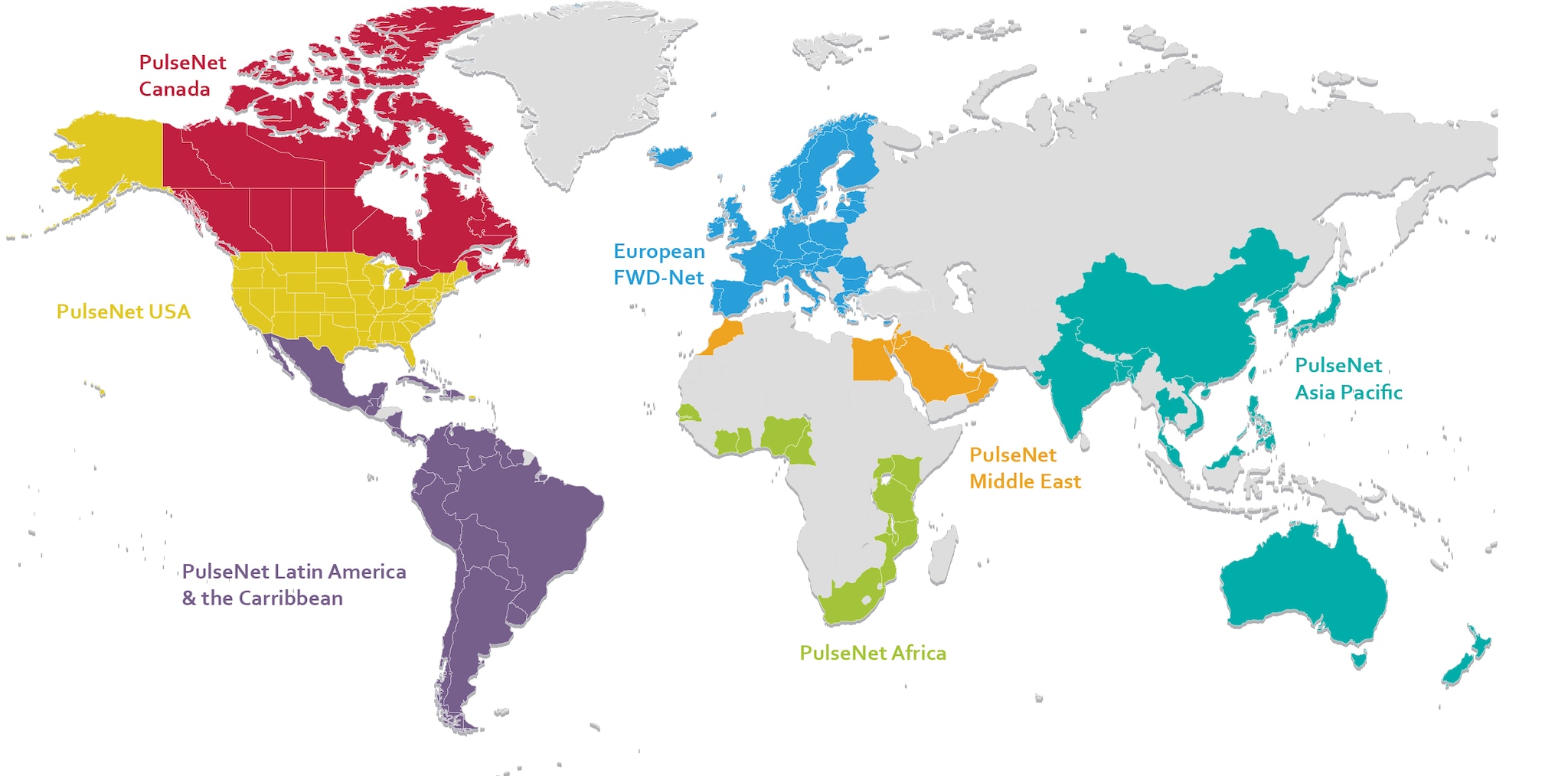At a glance
- PulseNet International consists of 88 countries and 7 regions around the globe.
- The network is managed by a PulseNet USA, PulseNet Canada, and representatives from each region.

How it works
PulseNet International works to implement standardized methods to share whole genome sequencing data in real-time within regional, and national laboratory networks. Data sharing supports surveillance and outbreak response of foodborne diseases.
International activies are supported by the following public health partners:
APHL and PAHO work with each countries public health laboratories, and USDA/FDA equivalents.

Program goals
Priorities for PulseNet International include:
- Providing technical assistance, resources, and training
- Facilitating regular communications and sharing of data
- Developing short and long-term visions for global surveillance activities
The United States, Canada, most of the European countries on the network have fully transitioned to using whole genome sequencing for foodborne illness surveillance activies. Other participants are transitioning, but the situations are more variable.
Currently, there isn't a single workflow or centralized international database, but participating laboratories are following a standardized method for gathering genomic data. One other challenge for PulseNet International is leveraging sequencing platforms built for SARS-CoV-2 and exchanging data to better facilitate foodborne disease surveillance.
Resources
- PulseNet International Coordinators are the first point of contact for any country or institution interested in joining the network. Coordinator information can be found on each regions webpage.
- A 2019 PulseNet participant survey to evaluate the current status, challenges, barriers, and successes of countries that have implemented whole genome sequencing. Click here to review the report.
- Visit the PAHO and APHL websites for detailed information
